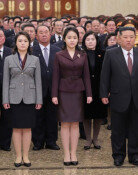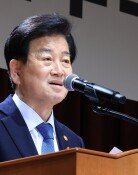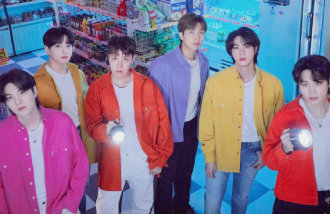Taking Team Korea to the Next Level
Taking Team Korea to the Next Level
Posted July. 11, 2006 03:25,

A blue-eyed foreigner wearing a shirt reading, We are Daehanmingook (We are the Republic of Korea) was spotted at the Frankfurt Square, where the red waves of Korean soccer fans had swept not long ago. Nowadays, street cheering and Daehanmingook, as well as Oh! Pilseung Korea, which is the rally chant for the Korean national team, can be easily heard from foreigners. This is the result of upgrading Koreas image and value one step further through soccer. If such result were converted into monetary figures, it would amount to a huge sum.
Looking forward toward the excitement of four years from now, I thought about the problems of Korean soccer and Korean society. First of all, I pondered which style Korean soccer should follow. During this World Cup, I focused on the matches of Korea and Japan. Both teams represent Asian soccer, but their styles are definitely different. Japan plays a technical game that places importance on midfield play. On the other hand, Korea once again showed a soccer match that is very physically demanding, based on power and speed.
In technical aspects, Japan has developed to the point of being able to compete against world-class teams. In particular, Japan scoring the first goal in its match against Brazil shows how much Japanese soccer has evolved. However, as it showed during its game against Australia, it still lacks stamina in the latter part.
In contrast, with the players being tense early in the game, the Korean squad gave the impression that it was out of shape and committed many blunders. Nevertheless, after giving up a goal, the movement of the players became faster and overwhelmed the opposition team, making it difficult to distinguish the true capability of the Korean team. I thought there was unskillful match management as well as minute technical problems. One example would be Korean players being feeble against the opponents strong defensive pressure.
Hence, the direction that Korean soccer should take is clear. Combining together the two different styles of the two different teams is the way to narrow the gap with world-class teams.
I can feel once again that Korea was becoming more and more known through this World Cup. When I parked the car in a rural road in Germany and took a break, foreigners would ask me whether I was Japanese or Chinese, but now they also ask if Im Korean and chant Daehanmingook. It feels good and makes my shoulders tingle.
But what is our reality? I recall some people worrying that our interest in soccer, which even foreign media envied, was an excessive manifestation of patriotism. After failing to advance to the round of 16, our interest in the World Cup cooled down to icy cold. I observed seats reserved for Asian countries during the semi-final game between Germany and Italy. There were many Japanese soccer association officials and Chinese fans. I searched the bleachers to see if I could find a familiar face. However, I failed to recognize a single face. There werent any Korean soccer association officials or anyone related to them. This was the reality.
In order for Korean soccer to leap to the next level, tradition must be valued, but consistent attention and passion about world soccer is also required, just as European countries value their own tradition and adopt the newest trend and make it as part of their own pride.
Expecting Korean soccer and society to stand in the center, not on the edge, of the world, I once again ponder what is the way to help the development of Korean soccer.






![전기매트 틀고 자면 몸에 전자파 쌓인다?” 직접 측정해보니 [알쓸톡]](https://dimg.donga.com/c/138/175/90/1/wps/NEWS/IMAGE/2026/01/02/133079758.3.jpg)
